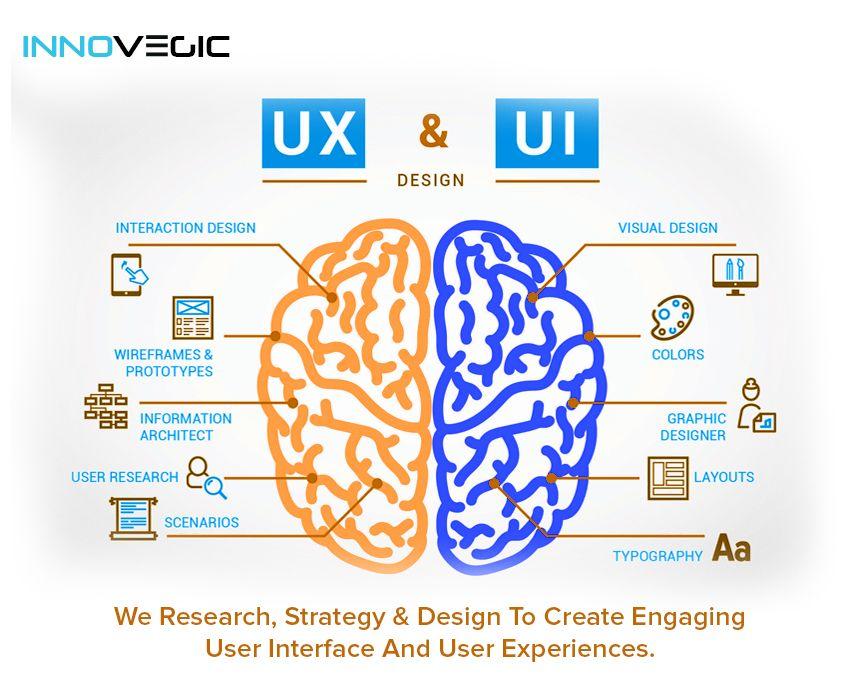Inquire
The Power of UX and UI: Building a Seamless Digital Experience

In the digital age, creating an exceptional user experience (UX) and an intuitive user interface (UI) is paramount for the success of any website, app, or software. While often used interchangeably, UX and UI serve different, yet interconnected, purposes. Together, they can elevate your digital presence and leave a lasting impression on users.
Understanding UX:
User Experience, often referred to as UX, encompasses the overall feeling a user has when interacting with a digital product. It revolves around how a user perceives the utility, ease of use, and efficiency of the product. Here's why it's essential:
1. User-Centered Design: UX is all about the user. It involves extensive research to understand the needs, preferences, and pain points of your target audience. By placing users at the forefront, you create solutions that genuinely cater to their demands.
2. Seamless Navigation: A well-crafted UX design ensures that users can effortlessly navigate through your digital product. This means intuitive menus, logical flows, and user-friendly pathways.
3. Enhanced Accessibility: An inclusive UX design considers all users, including those with disabilities. Ensuring accessibility makes your product more valuable and ethical.
4. Customer Retention: An excellent UX keeps users engaged and satisfied, increasing the likelihood that they'll return, refer others, or remain loyal to your brand.
Understanding UI:
User Interface, often referred to as UI, is the visual design component that users directly interact with. It focuses on the aesthetics, look, and feel of the product. Here's why it's crucial:
1. Visual Appeal: A visually pleasing UI captures the user's attention and creates a positive first impression. It should reflect your brand identity and establish trust.
2. Clarity and Consistency: A well-structured UI uses clear, consistent design elements such as typography, color schemes, and icons. This promotes coherence and helps users easily understand how to interact with the product.
3. Efficiency and Interactivity: An intuitive UI design allows users to efficiently perform actions and interact with the product. Buttons, forms, and interactive elements should be designed for optimal usability.
4. Mobile Responsiveness: In an increasingly mobile world, a responsive UI is essential. Users expect seamless experiences on various devices and screen sizes.
The Synergy of UX and UI:
While UX and UI serve distinct functions, they are deeply interconnected and should be developed in tandem. A beautiful UI is ineffective without a functional UX, and a seamless UX can be undermined by a poorly designed UI. Here's how they complement each other:
1. Clear Communication: UI elements should align with the UX strategy, ensuring that every design choice serves a specific purpose. For instance, a button's color should indicate its functionality.
2. User Feedback: Users provide invaluable feedback through their interactions with the UI. UX research can help identify user pain points and preferences, guiding UI refinements.
3. Iterative Process: The best digital products are the result of an iterative process where UX and UI designs are constantly refined based on user insights and evolving business goals.
Conclusion:
In the digital landscape, the marriage of UX and UI is non-negotiable for creating a memorable and effective user experience. Investing in both aspects ensures that your digital product not only looks stunning but also functions seamlessly and caters to the needs and desires of your target audience. Ultimately, the power of UX and UI lies in their ability to forge connections, foster trust, and leave users with a lasting positive impression, setting the foundation for business success in the digital age.

- Managerial Effectiveness!
- Future and Predictions
- Motivatinal / Inspiring
- Other
- Entrepreneurship
- Mentoring & Guidance
- Marketing
- Networking
- HR & Recruiting
- Literature
- Shopping
- Career Management & Advancement


 SkillClick
SkillClick